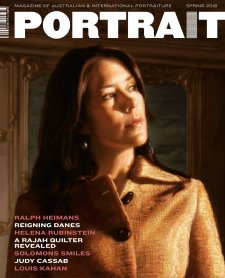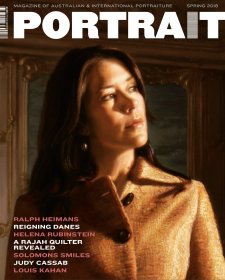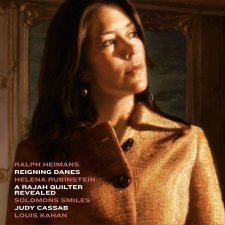As I prepared for my recent retrospective at Frederiksborg Castle, Denmark’s National Portrait Gallery, I was struck with the feeling of looking back at a visual diary of the past 30 years. Every portrait, many months’ work, brought back so many memories: the people, places, adventures; the things that inspired and preoccupied me. Each represents a unique experience, a distinct chapter, where I would immerse myself in the world of the subject to gain insight, and hopefully translate this to canvas.
The portrait of legendary conductor and pianist Vladimir Ashkenazy is a case in point. I am passionate about classical music, and Ashkenazy has always been one of my favourite performers, so I was particularly excited to hear news of his appointment as principal conductor of the Sydney Symphony Orchestra. After attending a performance at the Opera House, during which I sat in the choir stalls behind the orchestra to best observe the conductor’s infectiously joyful expressions and movements, I became increasingly determined to paint his portrait. I wrote him a letter requesting he sit for me, and a few weeks later – at an exciting time just days before my wife Tami was due with our first child – I was surprised to receive a call from the maestro himself. He said simply, ‘Ok, let’s do this!’
The following day I went to the Opera House to meet Ashkenazy and attend the first of many rehearsals and performances. I was then free to roam in search of inspiration, and found myself reacquainted with the incredible beauty of a masterpiece that I have admired since my days as a student of architecture at Sydney University. The daunting challenge was to provide a fresh perspective on an iconic, familiar structure. It wasn’t until I reached the bridge between the forecourts, placed my head on the ground and looked upwards, that I found what I was looking for. An unexpected jumble of intersecting trusses, parabolic cables, glass reflections and fractured segments of blue sky came suddenly into focus. I felt I was witnessing the hidden musicality and rhythm of the structure itself, and instantly realised this could be a double portrait of sorts: subject and context could be fused together. What context could be better for a portrait of Ashkenazy than an architectural manifestation of music itself? The setting could become an extension of the subject, as though Ashkenazy’s own musical energy were expressed symbiotically through the dynamism of the surrounding architecture. He sits, as it were, within the belly of a giant musical instrument.
I have very fond memories of the sittings that followed, the lively discussions about classical music, attending the wonderful concerts and going backstage to meet the players. The final portrait was unveiled in 2011 to celebrate the extension of Ashkenazy’s appointment with the SSO, from which followed numerous recordings, tours and performances that have become a cornerstone of classical music in Australia.
Through the generosity of Michael and Shanny Crouch, I am thrilled that this portrait in now in the collection of the National Portrait Gallery.














